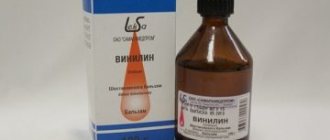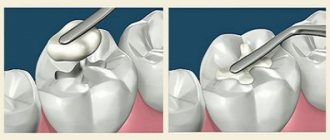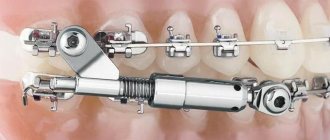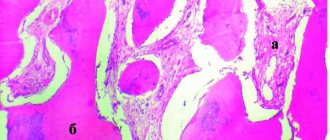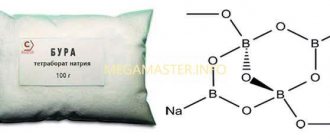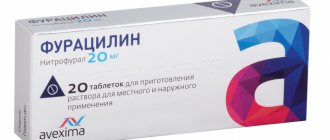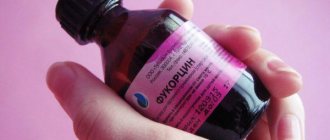An unpleasant disease affecting the oral cavity - stomatitis occurs mainly in children. However, adults also encounter this disease.
Small ulcers on the surface of the mucous membrane cause inconvenience and make you want to get rid of them as quickly as possible. And to do this, you don’t have to run to the pharmacy for expensive drugs.
It is worth paying attention to a cheaper but effective remedy - sodium tetraborate.
What is
Borax, as sodium tetraborate is also called, is a white, fine-crystalline powder, soluble in water or glycerin.
It is produced on the basis of boric acid, therefore it is a rather toxic substance. The composition of the drug includes 20 g of the active substance sodium tetraborate and 80 g of the auxiliary substance - glycerol.
The substance is used exclusively for local and external use. For the treatment of stomatitis, borax solution is used as a medicine for spot application, mouth rinse or application to damaged areas.
Indications and contraindications
The therapeutic effect of sodium tetraborate is characterized by quite strong bactericidal, antifungal and antiseptic properties.
It is used to treat internal and external surfaces for various types of fungal diseases, because it eliminates spores and prevents their reproduction.
This medicinal drug is used in the following cases :
- damage to the skin (the appearance of ulcers, cracks);
- pharyngitis - inflammation of the mucous membranes of the pharynx;
- tonsillitis;
- stomatitis in newborns;
- skin fungus;
- diaper rash in skin folds;
- formation of bedsores;
- periodontal disease.
Part of the drug penetrates the gastrointestinal tract, which can lead to negative consequences; Borax in glycerin is excreted in the same way as liquid and food.
This drug can accumulate in the liver and partially in bone tissue; its presence in the body, even after a single use, remains for a week.
Contraindications for sodium tetraborate are as follows:
- increased reaction of the body to external stimuli, in particular to this drug;
- damage to the skin or mucous membrane in the area of intended treatment;
- pregnancy;
It is strictly forbidden to take it internally.
This solution belongs to toxicity class 4 , so when carrying out treatment, especially in adolescents, you should be extremely careful.
20 g of borax is considered a lethal dosage, the maximum concentration in the blood is 40 mg/l, lethal - more than 50 mg/l.
We will tell you how to use oxolinic ointment for stomatitis in a separate article.
We will discuss which oral irrigator is best to choose here. What determines the price of devices?
At the link https://www.vash-dentist.ru/lechenie/bolezni-polosti-rta/stomatit-bpr/v-domashnih-usloviyah-2.html we have collected tips on how to treat stomatitis in adults at home.
pharmachologic effect
The action of borax is aimed at removing the cause of stomatitis and eliminating the centers of its spread. Due to the antiseptic and antibacterial effect, the drug prevents the appearance and increase in the number of microorganisms in the oral cavity.
The product is highly antifungal, so its use is justified in the treatment of stomatitis caused by fungus. Borax destroys the attachment of a fraction of the candida fungus to the mucous membrane and prevents the proliferation of its spores.
Release form
Sodium tetraborate is commercially available in two forms: as a prepared solution and tablets.
- A borax solution with a concentration of 20% is used to treat the affected surface of the mucous membrane in children. It is sold in glass bottles with a capacity of 30 grams. This amount is enough for a week's use, during which it is often possible to cope with the disease.
- When purchasing borax tablets, a mixture is prepared from them for rinsing: 2 pieces are dissolved in a glass of water. The prepared substance is used to rinse the mouth. This solution is toxic and therefore not recommended for use by children, as there is a risk of ingestion and poisoning.
Detailed instructions for use
The use of sodium tetraborate is most effective for candidal stomatitis: the solution helps stop the spread of fungus on the mucous membrane of the oral surface. The specific use of borax depends on the severity of the disease, the area of the affected area, and the age of the patient.
In infants
This substance effectively fights fungal spores on the oral mucosa and prevents their reappearance.
Before treating the affected areas with borax, it is worth preparing the oral surface. With stomatitis, the ulcers are often covered with a crust, which prevents the absorption of the drug, so it must be removed. For infants, this is done as follows: a cotton swab is moistened with an oil solution of vitamin A, dried wounds are treated with it, and the crusts are removed with gentle movements.
Have you heard of this disease - black hairy tongue? We will tell you more about it in our next publication. And here you will learn about the features of treatment of submandibular lymphadenitis.
It is worth remembering that for infants the process of removing the crust can be quite painful, so preliminary anesthesia may be required. For these purposes, drugs containing lidocaine are used.
Further actions for treating fungal-affected areas of the mucous membrane boil down to the following steps:
- the tip of the index finger is wrapped in a sterile bandage;
- the bandage is moistened in a borax solution;
- The baby’s oral surface is treated: plaque is removed from the tongue, the inside of the cheeks and lips.
The described procedure for sanitation of a child’s oral cavity should be carried out no more than 2 times a day. The result will be noticeable after two days of using borax to treat sores.
To avoid relapse of the disease, it is necessary to clean the baby’s oral cavity within 3-4 days after the ulcers have completely healed.
In teenagers
For older children, two methods can be used: rinsing and spotting.
- Rinsing the mouth with borax solution. To prepare the solution, add a tablespoon of rock salt and half a teaspoon of borax to a glass of water. After dissolving the salt, the composition can be used to rinse the mouth.
- Spot treatment is carried out in the same way as in the case of infants. Use a cotton swab dipped in borax solution to wipe the tongue, inner surface of the lips and cheeks. This method is more effective because it allows you to more thoroughly remove plaque from the oral mucosa.
Sometimes the clinical manifestations of stomatitis have a different specificity: cracks and rashes appear on the lips. In this case, an application is used: wipes moistened with the solution are applied to the affected areas and left for a short period of time.
In the next video we will be told in more detail about stomatitis in children:
It is necessary to use the solution for rinsing or spot treatment of the oral cavity no more than twice a day. By treating the affected surface daily for a week, the problem will be eliminated.
In adults
Stomatitis is a disease not typical for adult patients. However, if there are signs of the development of a fungal infection in the oral cavity, you should also use borax in glycerin.
The treatment method for stomatitis in adults depends on the severity and extent of the disease.
There are several forms of development of stomatitis, the treatment of each of which has its own characteristics:
- Acute stomatitis characterized by the manifestation of all signs of the disease: redness of the mucous membrane, swelling, formation of ulcers, and the appearance of plaque.
To completely cure the disease and eliminate its root cause, the oral cavity must be treated with borax solution up to 6 times a day for 1 week.Using a gauze swab soaked in a medicinal substance, plaque is removed from the affected areas. In addition to spot treatment, you can use mouth rinses.
- If acute stomatitis is not completely cured and the immune system is weak, the disease passes into the chronic stage. The causative agent of the infection remains in the oral cavity and with a sharp decrease in the activity of the body’s immune system, it becomes active again.
For the treatment of chronic stomatitis, the oral cavity must be treated with a solution of sodium tetraborate up to 3 times a day for 2-3 weeks. If the disease cannot be eliminated during this period, you should seek help from your doctor.
To completely cure ulcers on the surface of the mucous membrane, it is recommended to use sea buckthorn oil, which has a healing effect. In addition, you should refrain from eating too hot food and drinks.
Use for infants
For several decades, a solution of borax in glycerin has been used to treat stomatitis in infants, because it effectively removes fungal spores from the mucous membrane and prevents their reappearance.
Algorithm for sanitation of children's mouths:
- wash your hands with soap;
- take a sterile bandage and wrap your index finger;
- moisten the bandage with a medicinal solution;
- start processing: clean the tongue, remove plaque on the inner surface of the cheeks and lips;
- repeat similar steps after each breastfeeding.
Ease of use, low price and effectiveness of the drug are the reasons for its widespread use. Within two days you will see noticeable improvements.
Young mothers should remember that after the ulcers have healed, they need to continue sanitation of the child’s mouth for several more days to consolidate success and prevent relapse.
There is still controversy among doctors regarding the use of sodium tetraborate for the treatment of infants. Many argue that this drug is quite toxic and is not excreted from the body ; moreover, it has a number of contraindications for use.
For information about the advantages and disadvantages of various methods of treating stomatitis in children, watch the video:
If you have serious doubts about using this remedy, then use a proven remedy from our grandmothers: one spoon of baking soda per glass of boiled water, moisten a sterile bandage in this solution and carry out sanitation as described above.
Treat milk bottles and nipples with a 2% boric acid solution and pour boiling water over them.
Doctors recommend sanitizing with a napkin or bandage, because a cotton swab or swab will not be able to apply the necessary pressure to the affected areas - such treatment will not have an effective effect on fungal spores.
Precautionary measures
Since sodium tetraborate is a drug with toxicity level 4, it must be used with caution.
Only external use of the solution is allowed. It is unacceptable to exceed the dosage prescribed by the attending physician. The same applies to the duration of treatment: too long use of the drug can lead to an overdose.
This article will help you learn how to treat a fistula on the gum at home and how treatment methods differ in adults and children. By following this link: you will find information about why dental fluorosis occurs, and you can also see photos of this disease.
And here are the common causes of a green coating on the tongue.
Recommendations for adults
It must be remembered that only a doctor can prescribe the correct treatment based on the diagnosis, and the course of therapy itself depends on the causes of stomatitis and its form:
- Treatment of the chronic form of the disease in adults is carried out with the help of antibacterial, restorative drugs, including the use of borax in glycerin;
- Treatment of herpetic stomatitis is carried out with antiviral drugs.
The treatment regimen consists of two directions: general and local.
Local treatment fights various harmful bacteria, while the natural microflora is normalized, ulcers heal, pain is reduced, and soft tissue swelling is eliminated.
For acute stomatitis, similar therapy should be carried out every day: the mucous membrane of the oral cavity, larynx and visible part of the throat is treated with a gauze or cotton swab moistened with a solution of borax in glycerin, up to 6 times a day for a week.
If necessary, such wiping continues after the specified period, but after consultation with the attending physician.
When the disease becomes chronic , a similar treatment is done every other day for 3 weeks, but it must be remembered that an advanced disease quite often leads to negative complications.
Ulcers must be healed completely; sea buckthorn oil or Solkoseril gel are suitable for this purpose. During treatment, you must avoid hot and spicy foods that irritate the wound.
Side effects and overdose
The use of borax in glycerin in some cases is accompanied by such unpleasant side effects as redness of the mucous membrane at the site of treatment and a burning sensation. These symptoms are most often observed in patients prone to allergic reactions.
In case of an overdose of the drug, the following symptoms occur:
- general muscle weakness;
- nausea, vomiting, abdominal pain;
- diarrhea;
- muscle spasms of the face or limbs;
- loss of consciousness;
- arrhythmia.
The appearance of the described symptoms indicates the need for gastric lavage and refusal to further use the drug.
The consequence of an overdose of sodium tetraborate can be disturbances in cardiovascular activity, liver and kidney damage.
The lethal dose of the substance when taken orally is 10-20 g for an adult.
Treatment of older children
The use of a borax-based drug for the treatment of stomatitis in older children is carried out according to the following scheme :
- for rinsing, prepare a solution: take a glass of chilled boiled water, add 1 tbsp. l. rock salt, add ½ tsp. borax in glycerin;
- we treat ulcers or inflamed areas according to the method described in the previous section.
When using this drug for the treatment of pediatric stomatitis, an overdose is excluded, but parents should be aware of its negative manifestations:
- pain appears in the abdominal area;
- the child complains of a headache;
- frequent bouts of vomiting;
- convulsions and partial loss of consciousness;
- lack of appetite;
- development of arrhythmia.
Serious consequences of an overdose can be:
- dysfunction of the liver and kidneys;
- problems with the functioning of the heart and circulatory system.
If any of the above symptoms appear, you must immediately show your child to a doctor.

